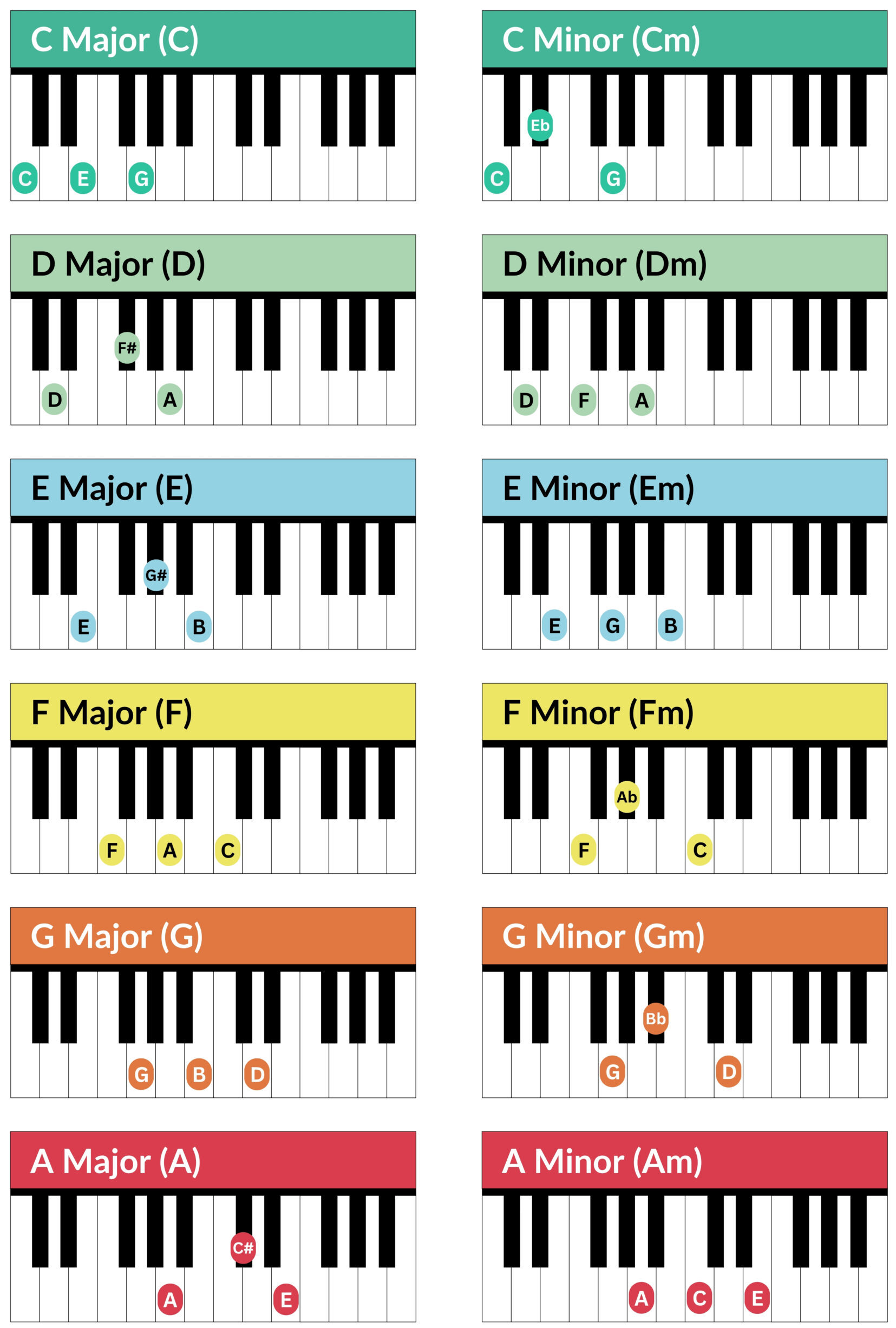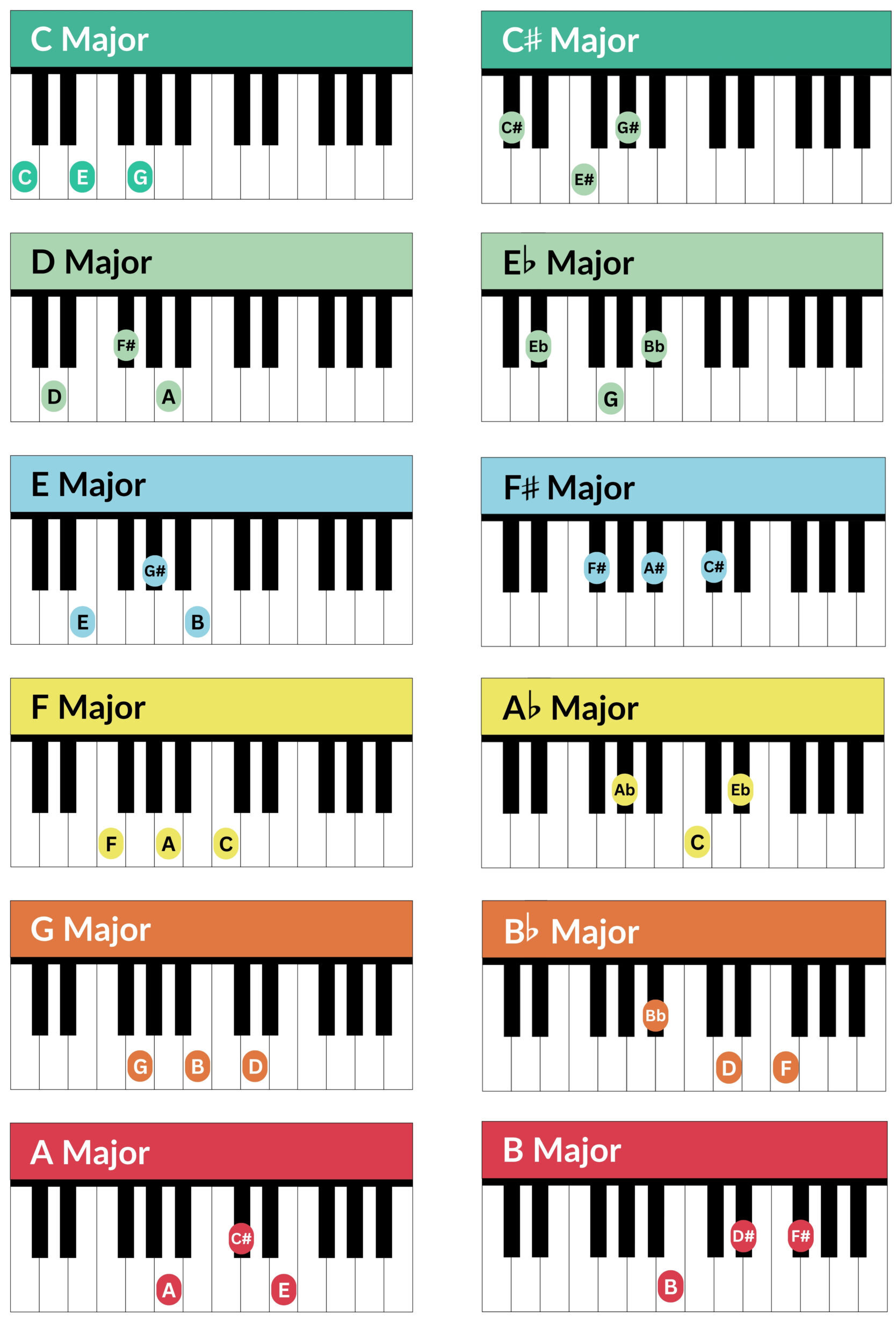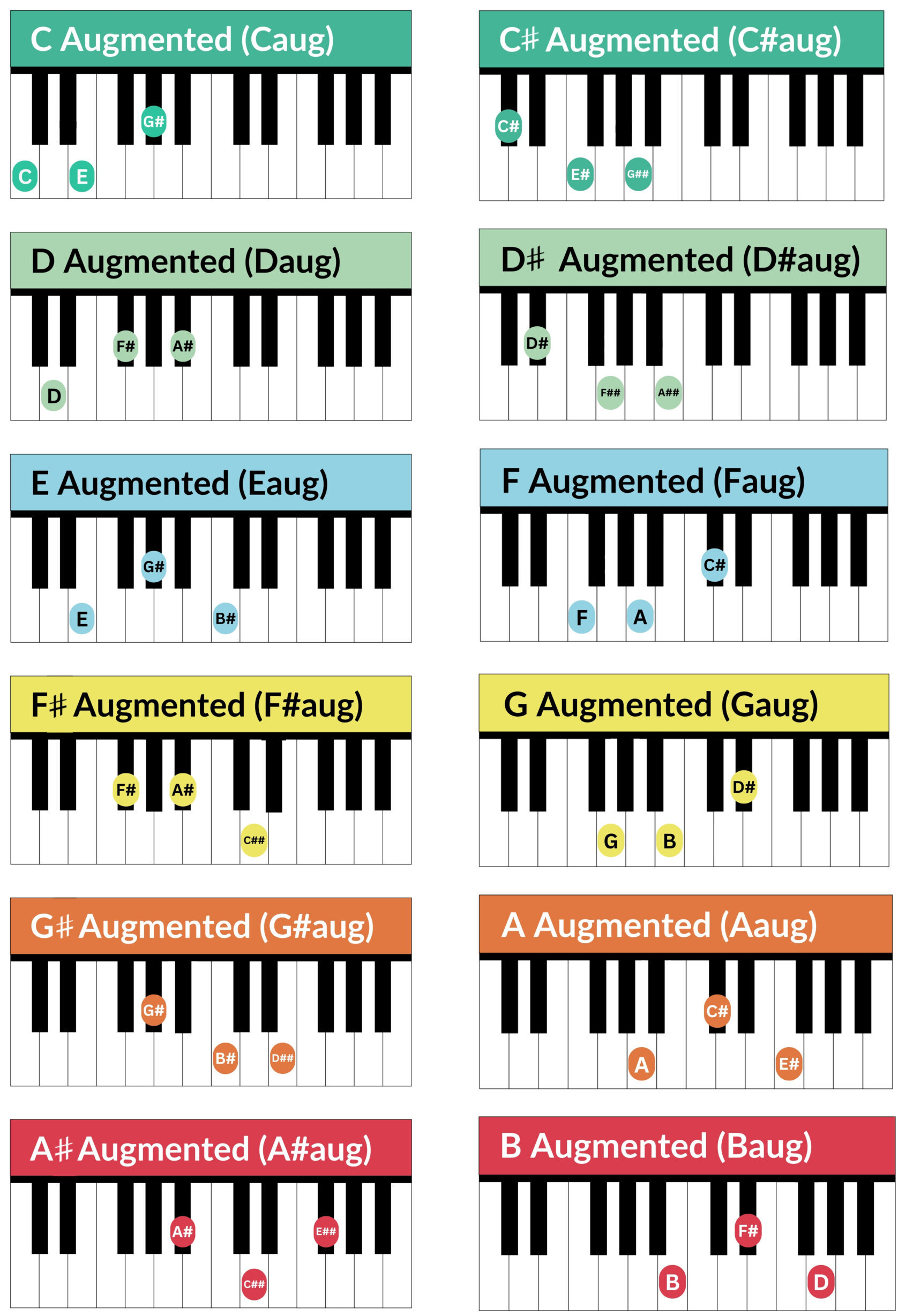Want to know how to play piano chords? Are you looking for a quick, clear guide to help you get to grips with basic piano chords? You’re in the right place. Formed by playing two, three or more notes together, basic piano chords can shape the emotional tone and structure of a piece of music. The combination of notes within a chord defines its character and combinations of chords can define the charter of a song.
This piano chords guide for beginners which will help you understand simple chords on piano and have you playing your favorite piano chord songs in no time. Let’s dive into the interesting world of piano chords!

What are piano chords?
The most commonly used chords in music are triads, we will be focusing on these basic piano chords throughout this article. Triads are made up of three notes: a root, a third and a fifth. These triads form the harmonic basis for most songs you listen to. For beginners, understanding triads, learning to read piano chords and utilizing a piano chord chart can simplify the process of playing and understanding music.
Triads are notated with letters and symbols. Understanding the notation system used for piano chords is essential for songwriters, producers and musicians who want to create impactful and memorable music. The basic triad symbols are:
- C = C Major triad
- Cm/C- = C Minor triad
- C° = C Diminished triad
- C+ = C Augmented triad
These chord symbols are often used above the staff to help when reading harmony in songs, just like in this example.

Common piano chords chart
The best way to start learning chords is by getting a few common ones under your belt. Knowing the chords on this chart will take you a long way and help you play lots of songs.

Charts like this show you which piano keys to press for each chord. If you’re just starting out be sure to have a chord chart nearby as they can be really helpful.
What are major piano chords?
Major piano chords have a bright and happy sound. They are built using a root, major third and a perfect fifth. The intervals between these notes gives major chords their distinct stable and full sound. Here is a chart of all twelve major chords on piano for you to check out.

What are minor piano chords?
Minor chords contrast with major chords in that they have a darker or more somber tone. They are constructed using a root note, a minor third and a perfect fifth. While major chords use a major third, minor chords use a minor third, this gives them their distinct melancholic or introspective sound. Going between major and minor chords is a great way to explore the differing qualities of these chords. Use this chart to explore all 12 minor chords.

What are augmented chords?
Augmented chords have a bright and restless sound. This triad is constructed using a root note, a major third and an augmented fifth. This augmented fifth is what gives this chord its unique sound. They are great for adding a little bit more flavor to your chord progressions. Use this chart to explore all 12 augmented chords.
- C augmented (Caug). C – E – G#
- C# augmented (C#aug). C# – E# – G##
- D augmented (Daug). D – F# – A#
- D# augmented (D#aug). D# – F## – A##
- E augmented (Eaug). E – G# – B#
- F augmented (Faug). F – A – C#
- F# augmented (F#aug). F# – A# – C##
- G augmented (Gaug). G – B – D#
- G# augmented (G#aug). G# – B# – D##
- A augmented (Aaug). A – C# – E#
- A# augmented (A#aug). A# – C## – E##
- B augmented (Baug). B – D# – F##

What are diminished chords?
Diminished chords have a dark and tense sound. This deceptively useful triad gets its charter from its unique construction. It is made from a minor third and a diminished fifth. It is perfect for adding a bit of tension and complex beauty to a chord progression. Check out all twelve diminished chords in this chart.
- C diminished (Cdim). C – Eb – Gb
- C# diminished (C#dim). C# – E – G
- D diminished (Ddim). D – F – Ab
- D# diminished (D#dim). D# – F# – A
- E diminished (Edim). E – G – Bb
- F diminished (Fdim). F – Ab – Cb
- F# diminished (F#dim). F# – A – C
- G diminished (Gdim). G – Bb – Db
- G# diminished (G#dim). G# – B – D
- A diminished (Adim). A – C – Eb
- A# diminished (A#dim). A# – C# – E
- B diminished (Bdim). B – D – F

Try playing all of these new chord types and see how they differ from each other both in terms of sound and structure. Have fun experimenting with them in your playing.
How to build chords with intervals on the piano
As we have seen all piano chords are built using a combination of intervals. Intervals are the way to measure the distance between two notes. By stacking different piano intervals, you can create a variety of chords.
For example, a major chord is built by stacking a major third (four semitones) and a minor third (three semitones). In a C major chord, the interval from C to E is a major third, while from E to G, it’s a minor third.
The root is the note that gives the chord its name, such as ‘C’ in a C major chord. The third determines whether a chord is major or minor. In C major, ‘E’ is the third, forming a major chord. The fifth adds fullness, like ‘G’ in a C major chord or can give a chord either an augmented or diminished quality. You can see a comparison of the construction of all the chords we have covered so far in this diagram.

Exploring beyond basic chords
Now we have covered the basic triads we can have a look at some other common chords and variations that you might encounter on piano.
Inversions
Chord inversions are created by changing the order of the notes while still playing the same chord. These variations allow you to achieve different harmonic textures and smoother transitions between chords. They are a great way to add variety to your chord progressions. Have a look at the examples below:
- Root position: C – E – G
- First inversion: E – G – C
- Second inversion: G – C – E

Slash chords
Slash chords are written as a fraction, like C/E, and indicate a chord played over a specific bass note. For example: C/E: A C major chord C-E-G with E as the bass note. These should not be confused with inversions. Slash chords only specify the note played in the bass and the chord quality, not the specific chord structure. Slash chords can be a great way to make your bass lines more interesting and add some movement to your chord progressions!
Suspension chords (Sus chords)
Suspended chords replace the third of a major or minor chord with a second (sus2) or a fourth (sus4). These chords are neither major or minor as the third is removed. This creates a more open sound.
- Csus2: C – D – G (root, major second, perfect fifth)
- Csus4: C – F – G (root, perfect fourth, perfect fifth)

How do you play a chord on the piano?
As you can see, playing a chord is simple once you understand its structure and how to build them. Remember these simple steps when you play the chords we have looked at in this article.
- Find the root/bass note: This is the note that gives the chord its name.
- Identify the third/suspension and fifth: These notes determine the chord’s quality.
- Use proper finger placement: Generally, use fingers 1 (thumb), 3 (middle), and 5 (pinky) for triads.
- Press all notes together: Play them at the same time for a full sound.
Be sure to get comfortable with all of these aspects of playing a chord. One of the most foundational aspects of piano technique is hand position and posture. This aspect alone has an immense impact on your overall learning process, and it’s therefore essential to spend time working on it. It all starts with good habits and learning your basic chords well. You can then have some fun trying it out with our case study, The Beatles’ Let it Be.
Case study: the impact of chords in “Let It Be” by The Beatles
“Let It Be” by The Beatles provides a clear illustration of the power and impact of piano chords in music composition.
- C major Chord (C-E-G): The song begins with a C major chord, introducing the song with a strong, happy, and uplifting mood.
- G major Chord (G-B-D): The next chord is G major, which maintains the positive vibe and serves as a perfect transition chord due to its shared notes with the C major chord.
- A minor Chord (A-C-E): The song then transitions to an A minor chord, introducing a touch of melancholy and deepening the emotional complexity of the song.
- F major Chord (F-A-C): Finally, the F major chord is introduced, resolving the minor tension and bringing back the positive mood to round up the verse.
Notice how all these chords have different jobs to do and how they give harmonic interest and movement which defines the piece. If you’re interested in learning how to play Let It Be on the piano, you can check out the piano tutorial on Skoove’s blog. You can also explore more songs with easy piano chords here.
Piano chords generator
This piano chords generator helps you to find any chord you need and will come in handy if you forget any chords along your way!
💡 If you are reading this from a mobile device, rotate it to display the tool in full width.
2. Choose the “Root” of the chord
3. Choose the “Chord qualities” (major, minor, etc.)
4. Click “Display”
* You can do the same with scales.
** You can invert chords and scales
Taking your chords to the next level!
You’ve made a great start on your piano journey but don’t let the fun stop here. Understanding piano chords is essential, but using them effectively in your playing takes practice. As we have learned, chords provide the harmonic foundation for any melody. Mastering the basic chords we looked at in this article will enhance every aspect of your piano journey, as chords and melodies work hand in hand. Use this as a guide to begin your chord exploration and keep practicing with help and support from us here at Skoove.
















